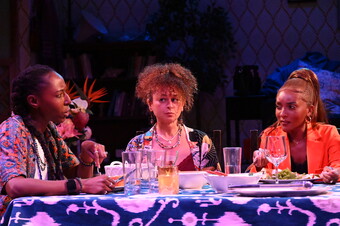I am a recent graduate of a prestigious BFA theatre conservatory. Shockingly, this is not the part of my identity that makes me stick out to employers and other arts professionals. I am also a mixed-race Asian American woman.
It’s true that staff lists at theatre companies have been diversifying. Changes aren’t happening quickly enough, though, and the industry is experiencing growing pains—something that is natural now that those who have been in power for so long are being asked to think critically about their power and privilege. I can empathize with hardworking leaders struggling to catch up with the ever-changing dialogue surrounding diversity and inclusion as it relates to the field they have been deemed experts in. However, this doesn’t make any of these experiences less frustrating as an emerging professional of color.
In a recent job interview, the person interviewing me asked me explicit questions about my ethnicity—which, in any other field, would be seen as illegal according to the United States Equal Employment Opportunity Commission. I was told that the company was “looking for someone like me” in this role regarding my mixed race.
I can’t fault this company for looking for someone like me. There’s a reason why I am an appealing candidate for certain jobs right now, and it does have to do with my race. I have one question for employers, though: Do you know why my race would make me an asset to your company?
In a recent job interview, the person interviewing me asked me explicit questions about my ethnicity—which, in any other field, would be seen as illegal.
It’s not because my name will look good in promotional material and not because my face will look good on your website. It is because my lived experience speaks to multiple nuanced identities that have given me a vocabulary to start dialogues with people who are different from me, which is what we want theatre to do. To fully move us forward toward an equitable field for all, it is not enough for companies to end their work toward diversity with a hire. They must be ready to engage in hard conversations that they may not hold expertise in.














Comments
The article is just the start of the conversation—we want to know what you think about this subject, too! HowlRound is a space for knowledge-sharing, and we welcome spirited, thoughtful, and on-topic dialogue. Find our full comments policy here
Just a note that both of the photos used in this article are from the original Children's Theatre Company (Minneapolis) production of The Wong Kids In The Secret Of The Space Chupacabra Go! in 2013. The production was in co-production with Ma-Yi Theater Company. Written by Lloyd Suh. Directed by Ralph Pena.
Thanks, Tim, we've updated the captions to reflect this full information!